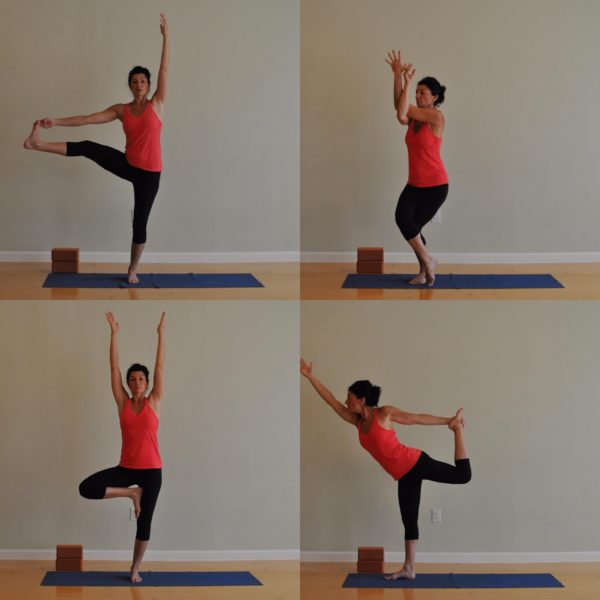
I’ve written a few articles about yoga cues. Cues are what we say to help our students figure out what to do. I recently recorded a webinar where I explained that cues can be action oriented, anatomy oriented or alignment oriented. There’s more but those are the things I like to focus on because they’re fairly easy to understand (if explained well) and important to put into action when on that mat. But one of the most important things to share with your students is this:
What is the point of this pose?
Think about it. Do you think the students in your classes understand each pose and why we do it? Sure, they might on some level understand that in Downward Dog you lengthen your spine but what about something like Eagle or Crow? And as teachers, do we understand the point of the pose and can we explain it succinctly enough to our students?
The answer to this lies in the anatomy. Of course, there are spiritual aspects to each pose as well but again, if we’re looking for something that’s easy to relate to by as many people as possible (and might be a gateway to the more spiritual side) I’d suggest we stick to the anatomy. So, once we do that, we need to figure out what the point of each pose is, anatomically speaking. You might wonder if there is just ONE point to every pose. Of course not! Yoga, in its infinite wisdom, is a system that has many benefits and each pose can be dissected to outline the many benefits it provides. But as teachers, it’s our job to highlight the biggest one. The one that’s going to really hit home for our students.
It makes sense to do this because if we can share the key benefit of each pose, we can:
- Help our students learn it
- Help our students understand the key action to take
- Give them a reason to do it outside of yoga class
- Help them tap into the sensation in their body when they do the pose, because they understand more about the part of the body that’s effected
- Demystify the practice and break it down to understandable, relatable actions.
Now, in order to do this as teachers, we need to understand anatomy. It’s not enough to just understand alignment; we need to know what’s happening underneath the skin, not just the shape. This is the difference between knowing to center the knee over the heel in Warrior 1 (alignment) and knowing that centering the knee will provide greater stability and will provide less wear and tear on the ligaments of the knee. So, as we build our anatomical knowledge base, we can share with our students the point of each pose.
How do you decide what the main point of each pose is, given all the benefits each pose provides? I generally look at what’s most accessible for students and what’s related to the movement from a gross motor movement perspective. For instance, Downward Dog has benefits to the wrists, if done correctly, but if you look at the pose from the gross perspective, it’s most certainly the lengthening of the spine that stands out among all other actions. Yes, you’ll lengthen your hamstrings, yes, you’ll stretch your calf muscles (gastrocnemius) but lengthening the spine is the biggest action/benefit you’ll get.
I encourage you as a teacher to write out a general sequence and indicate next to each pose what you think is the major benefit of each pose. Start to work that kind of cue into your teaching and see if you get any questions after class. Better yet, see if you notice students shifting their bodies into better position so they can access that benefit more. I see this a great deal and there’s nothing cooler than watching your students respond to a cue by shifting on the mat to find the right set up FOR THEM. Yoga is not a “one size fits all” practice and we need to give people solid cues informed by anatomy we understand (not stuff someone told us that we assumed was correct) in order to help our students find their way on the mat.
If you’re interested in a guide that breaks down all the key poses and gives you the key actions and cues, check out my anatomy manual, called the Bare Bones Yoga Guide to Anatomy here. For every pose, I use a repeatable template so it’s easy to learn the cues, the actions, the anatomy at work and a number of other critical things. This chapter is only part of the whole manual which will give you the supporting information/documentation to fill in the blanks and increase your understanding of this complex subject.
If you send me an email and mention this blog post, I’ll send it to you for $55 instead of list price $65.
Understanding anatomy and giving good cues will increase your impact as a teacher. You’ll help your students learn the practice and bring it into many of the movements they do all day.
Thanks for reading!Â
